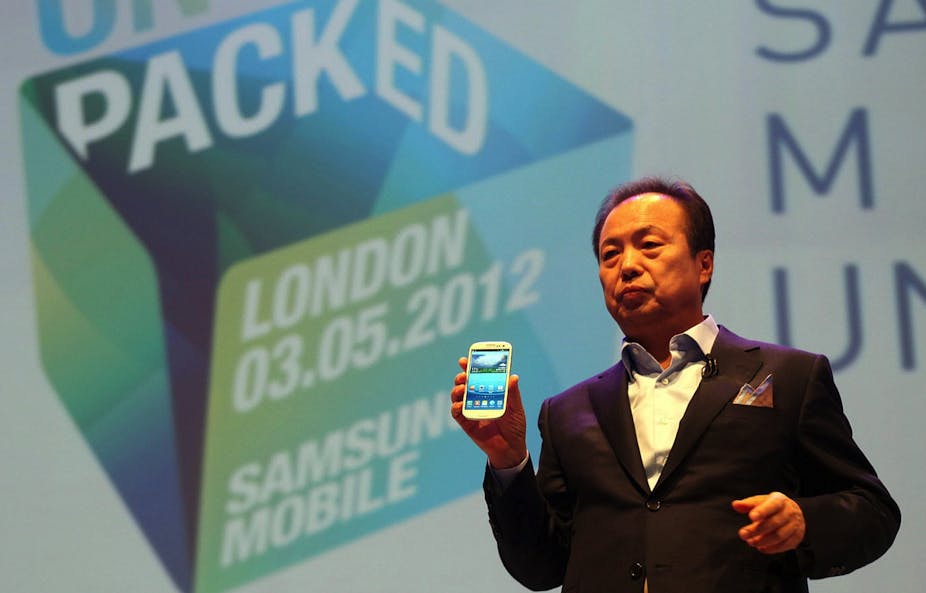It would be easy to simply attribute the massive rise in Samsung’s popularity to its equally massive spend on marketing. It has been estimated that Samsung spent around $11.5 billion in 2012 on advertising, promotions and other activities.
This is more than Apple, HP, Dell, Microsoft and Coca Cola combined. But it can be argued that no matter how much Samsung spent, it would not have had the results it has, if it hadn’t been for fundamental cultural changes in how people view a company’s and their technology’s country of origin.
Samsung has benefited both from its current place in the history of these changes and also its direct manipulation of how its products are culturally perceived.
Consumer attitudes to buying products outside of their own countries has changed in recent years alongside both the growth in manufacturing in countries like Japan and then China and the related decline of manufacturing in developed countries of the western world.
In fact, there is a term for this attitude called “consumer ethnocentrism” which refers to the tendency of people to favour products that come from their own countries.
In 1987, Professors of Marketing, Terence Shimp and Subhash Sharma defined a scale to measure the degree of “ethnocentrism” of consumers. Measurements of consumer ethnocentrism in various countries has shown that consumers in Europe are less ethnocentric than in the US who are in turn less ethnocentric than consumers in Asian countries.
Although consumer ethnocentrism can have a very strong influence on consumer purchasing, its influence has started to change because products are no longer manufactured in the same country as the company that sells them. It is actually difficult to find products that are not hybrid in the sense that they are manufactured in a different country to the company’s home country and this weakens the ethnocentric effect.
After all of the publicity surrounding Apple’s use of companies like Foxconn in China, it is very clear in consumers’ minds that iPhones are made in China. Even the labels that exhort that the products are “Designed in California” don’t necessarily convince US consumers that the iPhone is a particularly US product.
The other factor that is important in allowing consumers in western countries in particular to accept products from countries like Korea has been the use of Google’s Android as the operating system. Google and Android are very firmly associated with the US and are perceived very highly.
In fact, Google is the world’s 2nd ranked brand after Apple. The use of Android by Samsung and other eastern manufacturers has allowed them to mask their phones as being as American almost as Apple’s.
As a result of this, Samsung has risen in the brand rankings to 6th from a position in 2011 of 18. It is the only non-US company other than Vodafone (yes - I was surprised about that as well) in the top 10.
The improvement in Samsung’s general brand was helped by an incredibly successful marketing sponsorship of the Olympics. This again helped establish Samsung as a global brand strongly tied with the general success of the athletes and the event itself.
Samsung has been expanding its investment in the US with a recent announcement that they are setting up Open Innovation Centres in New York and Silicon Valley. These centres will be responsible for driving software innovation, an area that Samsung is not seen as currently being very strong in.
Investing in the US and creating jobs has always been an effective strategy in changing attitudes of a country’s citizens towards foreign companies. Something that companies like Japan’s Toyota pioneered decades earlier.
Of course, Samsung has been producing products that have earned technical acclaim and has been manufacturing and selling them on a grand scale. It has dominated the smartphone market and has become the world’s biggest smartphone vendor shipping 213 million smartphones in 2012.
By comparison, Apple shipped 136 million iPhones and Nokia, a measly 35 million. However, to achieve this success, they needed to become a nation-agnostic global corporation, but in essence, no different from any other successful US company.

